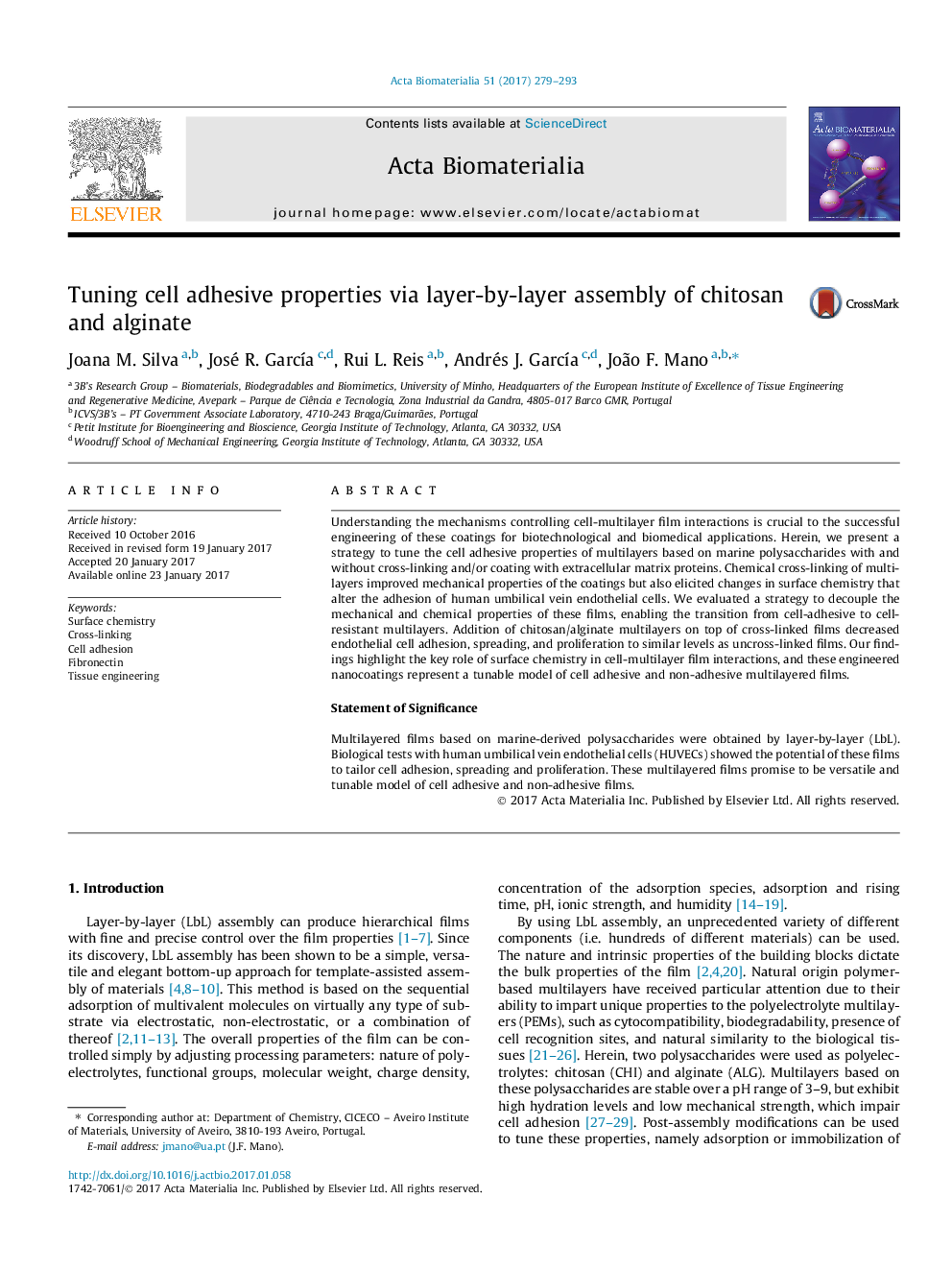| Article ID | Journal | Published Year | Pages | File Type |
|---|---|---|---|---|
| 6449488 | Acta Biomaterialia | 2017 | 15 Pages |
Understanding the mechanisms controlling cell-multilayer film interactions is crucial to the successful engineering of these coatings for biotechnological and biomedical applications. Herein, we present a strategy to tune the cell adhesive properties of multilayers based on marine polysaccharides with and without cross-linking and/or coating with extracellular matrix proteins. Chemical cross-linking of multilayers improved mechanical properties of the coatings but also elicited changes in surface chemistry that alter the adhesion of human umbilical vein endothelial cells. We evaluated a strategy to decouple the mechanical and chemical properties of these films, enabling the transition from cell-adhesive to cell-resistant multilayers. Addition of chitosan/alginate multilayers on top of cross-linked films decreased endothelial cell adhesion, spreading, and proliferation to similar levels as uncross-linked films. Our findings highlight the key role of surface chemistry in cell-multilayer film interactions, and these engineered nanocoatings represent a tunable model of cell adhesive and non-adhesive multilayered films.Statement of SignificanceMultilayered films based on marine-derived polysaccharides were obtained by layer-by-layer (LbL). Biological tests with human umbilical vein endothelial cells (HUVECs) showed the potential of these films to tailor cell adhesion, spreading and proliferation. These multilayered films promise to be versatile and tunable model of cell adhesive and non-adhesive films.
Graphical abstractDownload high-res image (157KB)Download full-size image
